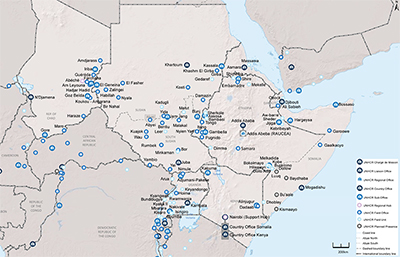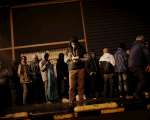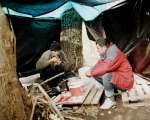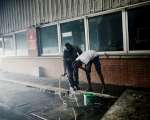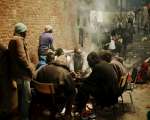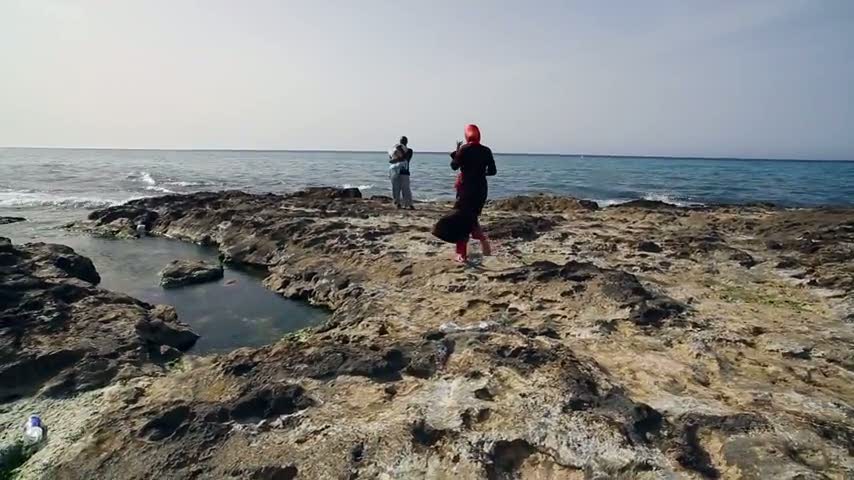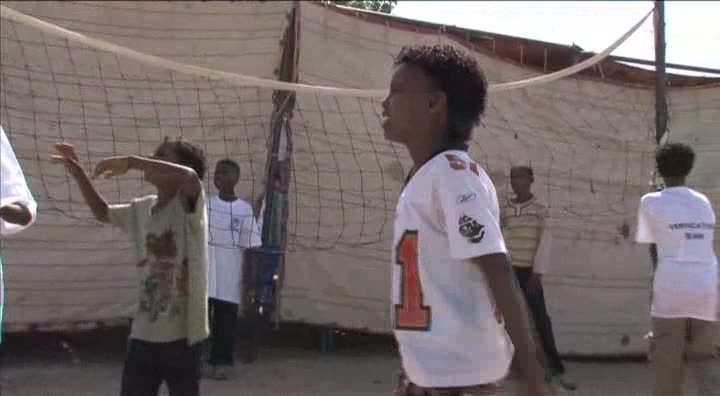Home > Where We Work > Africa > East and Horn of Africa > Eritrea
2015 UNHCR subregional operations profile - East and Horn of Africa
| Overview |
The eruption of violence in South Sudan in December 2013 placed an additional burden on an already volatile subregion, which continues to suffer from conflict and displacement.
Nine months into the South Sudan crisis, there were approximately 1.3 million internally displaced people (IDPs) and more than 450,000 new South Sudanese refugees, who fled to Ethiopia, Kenya, Sudan and Uganda. The situation remains volatile, compounding an already critical humanitarian situation; more than 243,000 refugees, mainly from Sudan, also need protection and assistance in South Sudan. The Intergovernmental Authority on Development (IGAD) continues to lead efforts to mediate the conflict. The risk of famine in some parts of South Sudan, and the prospect of more internal and external displacement, remain concerns.
Meanwhile, heavy rainfall and flooding in Ethiopia, Kenya, and South Sudan exacerbate challenges in refugee-hosting areas. The need for additional land to settle South Sudanese refugees remains a priority; UNHCR relies on the generosity of the host governments for the timely identification of suitable land.
Since the beginning of the year, Ethiopia has seen a steady influx of almost 190,000 refugees, who are fleeing the South Sudan conflict. In August 2014 it became the largest refugee-hosting country in Africa. People, mainly women and children, arrive in Gambella Regional State in western Ethiopia in need of protection and humanitarian assistance, often with alarming nutritional conditions, but infrastructure and services are limited. Large parts of the region are prone to annual flooding, which severely affects the refugee camps and requires urgent relocation. The relatively large number of unaccompanied minors arriving from Eritrea continues to be a challenge and the high risk of trafficking and smuggling of Eritrean refugees is a major protection concern.
While there are emerging signs of stability in Somalia, ongoing militia activity may unsettle the fragile security situation, affecting the population and resulting in new IDP numbers. Nonetheless, with relatively greater stability anticipated, some IDPs and refugees are spontaneously returning to their areas of origin. Finding solutions for the almost 1 million Somali refugees and estimated 1.1 million Somali IDPs remains a priority. In a ministerial meeting in Addis Ababa in August 2014, the Governments of Djibouti, Ethiopia, Kenya, Somalia, Uganda and Yemen adopted the Addis Ababa Commitment towards Somali Refugees, pledging to maintain asylum space for Somali refugees while needed and to work towards improving the quality of asylum in view of finding solutions for the refugees, many of whom have been in exile for three decades. As conditions for mass return are not yet fully present, the Government of Somalia committed to sustaining efforts to create a conducive environment for voluntary repatriation.
Chad, currently the region's most stable country, continues to be surrounded by conflict and insecurity in neighbouring countries. In 2014, Chad witnessed a refugee influx from the Central African Republic, Nigeria and Sudan. The deteriorating security situation in these countries means the prospect of facilitated voluntary repatriation remains meagre, so there is a need for contingency planning as, in 2015, Chad is expected to host even more refugees from surrounding countries.
Instability and conflict in the subregion are expected to persist in 2015, causing refugee outflows and internal displacement that will also affect humanitarian access and the cost-effectiveness of delivering assistance. Moreover, many of the humanitarian crises in the East and Horn of Africa are in the region's least developed parts, where the topography and lack of infrastructure make humanitarian assistance expensive and, at times, logistically near-impossible, particularly during the rainy season.
| Response and implementation |
In line with its Global Strategic Priorities, UNHCR's strategy in the East and Horn of Africa will focus on maintaining a favourable protection environment, providing basic needs and services, ensuring emergency preparedness and response capacity, and promoting durable solutions for refugees and other populations of concern.
The organization will continue to work with governments to ensure that they have well-functioning asylum systems and institutional frameworks, as well as the capacity to manage them. To maintain a strong protection environment, UNHCR is increasingly investing in supporting host communities, particularly to provide basic services and promote livelihood opportunities, to facilitate peaceful coexistence.
The Office will continue to address the basic needs of, and services for, refugees in the subregion to help save lives. It will provide water, sanitation and health services in refugee camps in Chad, Djibouti, Ethiopia, Kenya, South Sudan, Sudan and Uganda. UNHCR will also promote access to primary education for all refugee children. In urban areas, it will advocate for refugees to have access to existing services.
UNHCR is leading a coordinated inter-agency response to the South Sudanese refugee emergency. It will deliver protection and life-saving assistance, as well as basic services, with a special focus on the protection of women, children, and others with specific needs. This will include family tracing for unaccompanied and separated children, and supporting female-headed households. A disproportionately high number of the arriving refugees are women and children, the latter constituting about 70 per cent of South Sudanese refugee arrivals.
Emergency preparedness, including addressing the nutritional needs of refugees remain regional priorities, given the volatile socio-political situation. This will involve maintaining emergency stockpiles and updating contingency and coordination plans.
For protracted refugee situations in the subregion, UNHCR advocates support from governments, donors and other actors for refugees' self-reliance, pending a durable solution of benefit to hosting communities in terms of social cohesion and peaceful coexistence. The Global Initiative on Somali Refugees, for example, aims to create the right conditions in Somalia to make repatriation sustainable and safe, while maintaining asylum space in countries hosting Somali refugees. It promotes resettlement, and seeks other creative solutions, working in close partnership with a diverse range of stakeholders.
In line with its new policy on alternatives to camps, the Office will promote out-of-camp strategies whenever possible, such as in Chad, Ethiopia and Uganda, while ensuring that refugees are protected and assisted effectively, and able to find solutions. Where camps must be established or already exist, UNHCR will work to phase them out at the earliest possible stage, or transform them into sustainable settlements.
Operations in Chad, Djibouti, Ethiopia, Kenya, Somalia, South Sudan, Sudan and Uganda are presented in separate country chapters.
In Eritrea, UNHCR will strengthen core protection activities and endeavour to meet international standards for basic services to refugees, including in health, nutrition, water and sanitation, shelter and education. It will also continue its strategic shift in pursuing the provision of cash-based assistance to refugees, to promote self-reliance and livelihood activities. The Office will advocate the inclusion of refugees in national development plans and services, including UN joint programming initiatives.
As in previous years, the Regional Support Hub (RSH) in Nairobi, Kenya, will provide operational support and technical advice to countries in the subregion. Support will be delivered by 23 specialist units and deployees from NGO partners. The RSH seeks to ensure strategic coherence, management effectiveness, accountability, and financial due diligence among UNHCR operations in the region.
Further to the declaration of a Level-3 Emergency for South Sudan, in March 2014 the High Commissioner appointed a Regional Refugee Coordinator (RRC) for the South Sudan Situation. The RRC leads and coordinates an inter-agency response to the refugee emergency, supporting respective governments. The RRC is accountable for ensuring that the protection and assistance needs of South Sudanese refugees are led and coordinated in a coherent, comprehensive, and timely manner. A special section on the South Sudan situation is included in the Africa regional summary chapter in the print publication.
| Financial information |
In recent years, UNHCR's financial requirements in the subregion have increased, mainly as a result of emergency refugee situations, including the Somali and Sudanese influxes and most recently, in 2014, the South Sudanese refugee emergency.
The budget for 2014 has grown significantly, primarily to accommodate the needs of the new waves of South Sudanese refugees, as presented in the supplementary appeal Emergency Response for the South Sudan Situation launched in April 2014 (revised in August) and the inter-agency South Sudan Refugee Emergency Regional Response Plan for 2014, launched in March (and revised in July) for activities in neighbouring asylum countries. The UNHCR supplementary appeal for the South Sudan situation amounted to USD 566.5 million.
In light of the ongoing crisis, while some needs related to the emergencies have been mainstreamed into the respective country programme budgets for 2015, since the establishment of the ExCom-approved budget, the numbers of people of concern in the subregion have grown. It is likely that there will be an appeal for supplementary requirements in some of the affected country operations in 2015.
| UNHCR 2015 budgets for East and Horn of Africa (USD) | ||||||
|---|---|---|---|---|---|---|
| Operation | 2014 Revised budget (as of 30 June 2014) |
2015 | ||||
| Refugee programme PILLAR 1 |
Stateless programme PILLAR 2 |
Reintegration projects PILLAR 3 |
IDP projects PILLAR 4 |
Total | ||
| Total | 1,652,732,707 | 1,151,685,265 | 10,599,810 | 16,146,330 | 222,575,669 | 1,401,007,074 |
| Chad | 224,960,109 | 161,897,714 | 591,058 | 0 | 0 | 162,488,772 |
| Djibouti | 26,957,902 | 27,108,322 | 0 | 0 | 0 | 27,108,322 |
| Eritrea | 6,262,668 | 5,913,217 | 0 | 0 | 0 | 5,913,217 |
| Ethiopia | 284,579,979 | 206,880,080 | 0 | 0 | 0 | 206,880,080 |
| Ethiopia (Regional Liaison Office to the AU and ECA) | 2,026,808 | 1,439,099 | 0 | 0 | 0 | 1,439,099 |
| Kenya | 256,912,030 | 244,547,315 | 371,416 | 0 | 0 | 244,918,731 |
| Kenya Regional Support Hub | 11,592,525 | 7,896,061 | 0 | 0 | 0 | 7,896,061 |
| Somalia | 69,887,454 | 24,681,892 | 0 | 13,096,330 | 41,543,354 | 79,321,576 |
| Sudan | 125,935,560 | 97,068,429 | 3,077,345 | 0 | 30,466,838 | 130,612,612 |
| South Sudan | 424,282,355 | 185,497,586 | 6,539,991 | 0 | 150,565,477 | 342,603,054 |
| Uganda | 209,932,147 | 178,044,200 | 20,000 | 3,050,000 | 0 | 181,114,200 |
| Regional activities | 9,403,169 | 10,711,350 | 0 | 0 | 0 | 10,711,350 |
Source: UNHCR Global Appeal 2015 Update
UNHCR contact information
| The UNHCR Representative in Eritrea | |||||||||||||||
|---|---|---|---|---|---|---|---|---|---|---|---|---|---|---|---|
| Style of Address | The UNHCR Representative in Eritrea | ||||||||||||||
| Street Address | Campo Polo Meteten St. 1A754, House no. 35, Asmara, Eritrea | ||||||||||||||
| Mailing Address | P.O. Box 1995, Asmara, Eritrea | ||||||||||||||
| Telephone | 41 22 739 7294 | ||||||||||||||
| Facsimile | 41 22 739 7295 | ||||||||||||||
| ertas@unhcr.org | |||||||||||||||
| Time Zone | GMT + 3 | ||||||||||||||
| Working Hours |
|
||||||||||||||
| Public Holidays | 01 January 2015, New Year's Day 07 January 2015, Eritrean's christmas 10 April 2015, Good Friday 24 May 2015, Independence day 17 July 2015, Eid Al-Fitr 01 September 2015, armed struggle day 11 September 2015, National New Year 24 September 2015, Eid Al-Adha 24 December 2015, Birth of Prophet 25 December 2015, Christmas Day |
||||||||||||||

